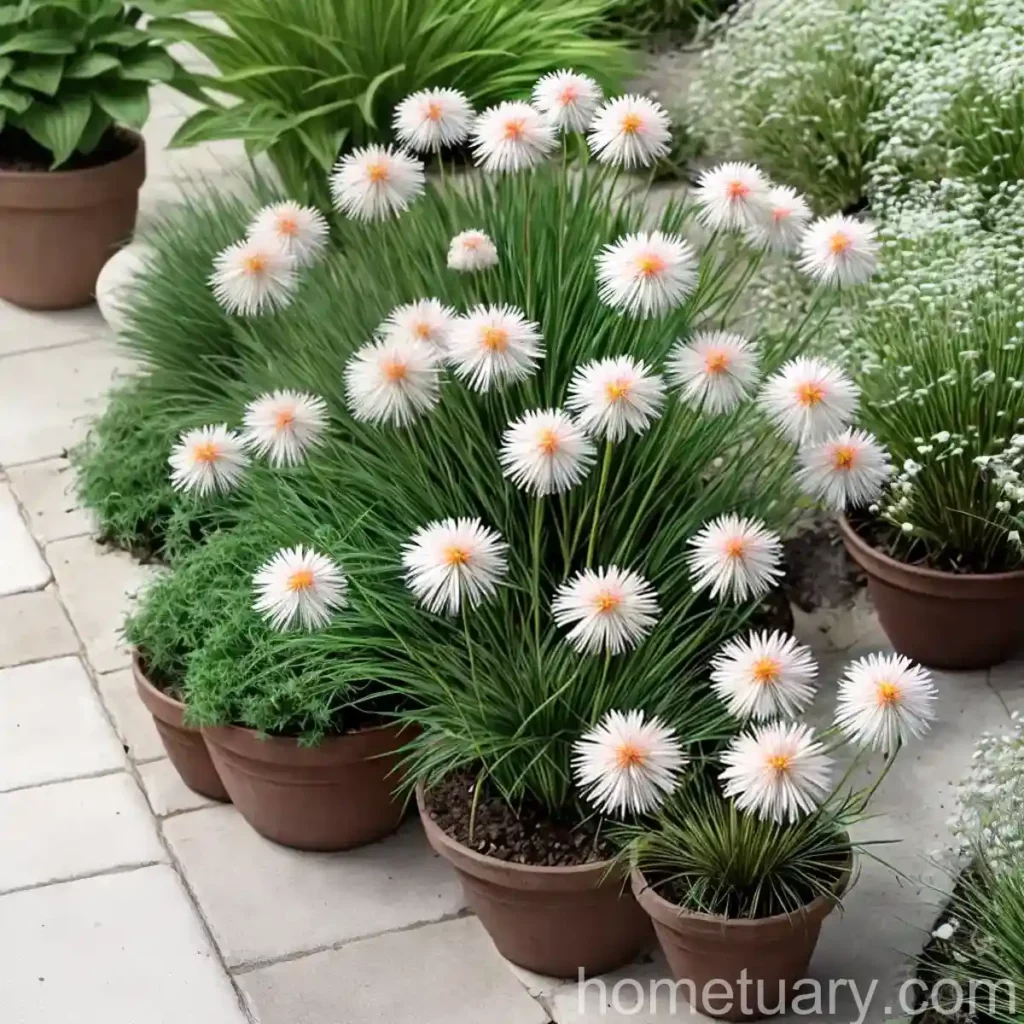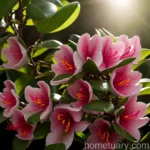Flowering Rush (Butomus Umbellatus): A Fascinating Aquatic Plant
Introduction
In the realm of aquatic flora, the flowering rush (Butomus umbellatus) stands out as a captivating and versatile species. Its distinctive characteristics, ecological significance, and cultural uses make it a noteworthy subject for plant enthusiasts and scientists alike. In this comprehensive guide, we will delve into the diverse aspects of this intriguing plant, encompassing its cultural significance, habitat, growth, care, uses, and much more.
What is Flowering Rush (Butomus Umbellatus)?
Flowering rush, scientifically known as Butomus umbellatus, is a perennial herbaceous plant belonging to the Alismataceae family. It is native to Europe and Asia and is a prominent feature in wetland ecosystems, particularly in shallow water areas such as marshes, pond edges, and slow-moving streams. Notably, the flowering rush is renowned for its striking umbel-shaped inflorescences, which bear numerous pink to reddish-purple flowers. The plant’s elongated, linear leaves further contribute to its visual appeal, making it a popular choice for both ecological restoration and ornamental gardening.
Key Takeaways – Flowering Rush (Butomus Umbellatus)
Before delving into the various facets of flowering rush, let’s summarize its key attributes:
- Scientific Name: Butomus umbellatus
- Common Names: Flowering rush, grassy rush
- Plant Type: Perennial aquatic herb
- Flower Description: Pink to reddish-purple flowers arranged in umbel-shaped clusters
- Habitat: Thrives in wetland environments, including marshes, ponds, and slow-moving water bodies
- Ecological Role: Supports biodiversity, helps with erosion control, and contributes to water purification
- Cultural Uses: Ornamental plant in water gardens and ponds
Culture
Water
Flowering rush exhibits a remarkable affinity for aquatic environments, thriving in waterlogged or even shallow submerged conditions. It can adapt to various water bodies, including ponds, lakes, and slow-moving streams. This species is known for its ability to grow in both stagnant and slightly flowing water, making it a versatile choice for wetland restoration projects and ornamental aquatic plantings.
Sunlight
In terms of light requirements, flowering rush prefers full to partial sun exposure. When cultivated in water gardens or natural ponds, it is essential to ensure that the plant receives an adequate amount of sunlight for optimal growth and flowering. Adequate sunlight exposure promotes robust foliage development and vibrant blooms, enhancing the overall visual appeal of the plant.
Soil
Grown primarily in aquatic and marshland habitats, flowering rush does not have specific soil requirements. It is well-adapted to growing in wet, muddy, or silty substrates, owing to its natural affinity for waterlogged environments. In cultivation, the plant can thrive in rich, loamy soils and can tolerate a certain degree of nutrient enrichment from organic matter.
Uses
Cultural Significance
The flowering rush holds cultural significance in various regions due to its ornamental value and ecological contributions. It has been traditionally used as an ornamental aquatic plant in landscaping projects, water gardens, and decorative pond settings. Furthermore, certain indigenous cultures attribute symbolic meanings to the plant, incorporating it into folklore, rituals, and artistic expressions.
Habitat Restoration
One of the prominent uses of flowering rush is in ecological restoration projects aimed at revitalizing wetland habitats and improving water quality. Due to its ability to stabilize shorelines, mitigate erosion, and enhance aquatic biodiversity, it is often included in wetland restoration initiatives. The plant’s robust root system and adaptability to varied water conditions make it an invaluable asset in habitat enhancement and conservation efforts.
Water Purification
Flowering rush plays a role in water purification and nutrient uptake within aquatic ecosystems. Its root system effectively absorbs excess nutrients, suspended solids, and contaminants, thereby contributing to the overall health and clarity of water bodies. This inherent capacity for water filtration makes it a natural ally in the restoration and management of aquatic environments impacted by eutrophication and pollution.
Fertilizer
In its natural habitat, flowering rush obtains essential nutrients from the aquatic environment and does not typically require additional fertilization. However, in a cultivated setting such as a decorative pond or water feature, it may benefit from periodic supplementation with aquatic plant fertilizers. Slow-release fertilizers or specialized formulations designed for aquatic plants can support the plant’s growth and flowering, especially if the natural nutrient levels in the water are limited.
Pruning
Pruning is generally not a major concern when it comes to flowering rush, especially in natural habitats where it can grow and spread freely. In garden or ornamental pond settings, dead or decaying foliage can be trimmed to maintain the plant’s aesthetic appeal and prevent the accumulation of organic matter in the water. Additionally, the removal of spent flower heads can promote continuous blooming and prevent the dispersal of seeds in controlled environments.
Propagation
Seed Propagation
Flowering rush can be propagated from seeds, which are produced within its distinctive umbrella-shaped inflorescences. Harvesting mature seeds from the plants and sowing them in suitable aquatic substrates can facilitate the establishment of new populations.
Division
Another common method of propagation involves dividing the plant’s rhizomes, particularly in cultivated settings. By carefully separating the rhizomatous clumps and replanting them in desired locations, individuals can propagate and expand the presence of flowering rush in aquatic gardens and landscape features.
Container Popularity
Due to its striking appearance and valuable ecological attributes, flowering rush has gained popularity as a container plant for aquatic gardens and ponds. Its graceful foliage and vibrant floral displays make it an appealing choice for enhancing the visual allure of water features, while its ecological functions contribute to the overall health and balance of aquatic ecosystems contained within these features.
Container Gardening Considerations
When cultivating flowering rush in containers, it is essential to select appropriate aquatic planting containers that provide sufficient space for the plant’s root system to thrive. Additionally, the use of aquatic planting media designed for water gardening can support healthy growth and ensure the overall well-being of the plant in the confined environment of a container.
Common Diseases
Flowering rush is generally resistant to many common plant diseases. However, it may be susceptible to certain fungal infections, particularly if growing in conditions characterized by prolonged moisture and poor air circulation. Common diseases that can affect flowering rush include:
- Leaf Spot: This fungal disease manifests as circular or irregularly shaped lesions on the plant’s foliage, potentially leading to leaf yellowing, browning, or premature defoliation.
- Rust: Rust infections can cause the formation of orange to reddish-brown pustules on the leaves, leading to aesthetic deterioration and potential impact on the plant’s health.
Disease Diagnosis
Diagnosing diseases in flowering rush involves careful observation of the plant’s foliage, flowers, and overall appearance. Symptoms such as leaf discoloration, spotting, or unusual growth patterns can indicate the presence of fungal infections or other diseases. In cases of suspected disease, it is advisable to consult with a plant pathologist or horticultural expert to accurately identify the specific ailment and implement appropriate management strategies.
Common Pests
Flowering rush is relatively resistant to pest infestations, owing to its adaptation to aquatic and wetland habitats. Nevertheless, certain pests may occasionally pose a threat to the plant, particularly when it is grown in artificial or semi-natural settings. Common pests that can affect flowering rush include:
- Aphids: These small, sap-sucking insects can colonize the plant’s foliage, causing stunted growth and deformities in severe infestations.
- Leaf Miners: Larvae of leaf-mining insects can create tunnels within the plant’s leaves, leading to visible damage and aesthetic degradation.
Botanist’s Tips
Whether considering the cultivation of flowering rush for its ornamental charm or its ecological contributions, the following tips can guide enthusiasts and horticulturists in successfully integrating this aquatic plant into their projects:
- Adaptive Planting: Assess the specific environmental conditions and water quality parameters of the intended planting site to ensure compatibility with the plant’s requirements.
- Naturalistic Planting Design: Incorporate flowering rush into naturalistic pondscapes and wetland gardens to maximize its ecological benefits and aesthetic appeal.
- Biodiversity Enhancement: Use flowering rush as part of a diverse planting scheme to support a range of aquatic wildlife and foster a balanced ecosystem within the targeted habitat.
- Regular Monitoring: Periodically inspect the plant for signs of disease, pest infestations, or overgrowth, and take timely measures to address any issues that may arise.
Fun Facts
- The genus name Butomus is derived from the Greek word “bous” (meaning “ox”) and “stoma” (meaning “mouth”), alluding to the shape of the plant’s fruit, which was believed to resemble an ox’s mouth in ancient times.
- Flowering rush is included in the Global Invasive Species Database due to its invasive potential in certain regions outside its native range. Although it offers ecological benefits, its rampant growth can pose challenges in non-native ecosystems.
Links to External Resources
To delve deeper into the world of flowering rush and its diverse aspects, explore the following external resources:















